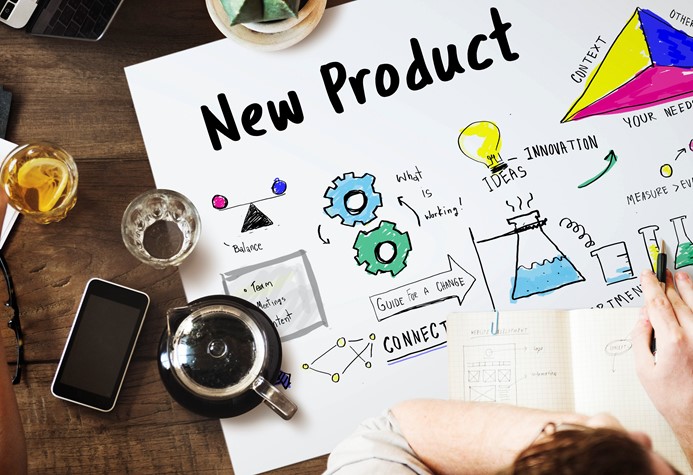Allsolutionsnetwork.com, commonly referred to as ASN, is a comprehensive website that offers a variety of opportunities to earn money. The site is designed to help people make money in several ways, and the best part is that it is very easy to get started. Whether you are looking for a side hustle, a full-time job, or just some extra cash, ASN has something for everyone.
One of the ways to earn money on ASN is by becoming an affiliate. ASN has a vast affiliate network that allows people to promote various products and services and earn commissions. Becoming an affiliate is easy and requires no prior experience. Once you sign up for an affiliate account, you will be provided with a unique link that you can share on your website, social media platforms, or any other place online.
Every time someone clicks on your link and makes a purchase, you earn a commission. The amount you earn varies depending on the product or service you promote, but in most cases, it is a percentage of the sale price. ASN has a wide range of products and services, including health supplements, financial services, and e-commerce products, so you are sure to find something that interests you.
Another way to earn money on ASN is by participating in the company’s profit-sharing program. When you sign up for this program, you become a part-owner of ASN, and you are entitled to a share of the company’s profits. The amount you earn depends on several factors, including how much you invest and how successful the company is.
Participating in the profit-sharing program is an excellent opportunity for people who are looking for a long-term investment. ASN has a proven track record of success, and the company’s profits have been consistently increasing over the years. By investing in ASN, you are not only earning money but also becoming a part of a community of like-minded individuals who are passionate about helping others.
In addition to the above opportunities, ASN also offers several other ways to earn money, including:
-
Referral Program: When you refer someone to ASN, you earn a commission on any purchases they make. This is an excellent opportunity for people who have a large network of friends and family.
-
Cashback Program: ASN has a cashback program that allows you to earn money on your purchases. Every time you buy something through the ASN website, you earn cashback, which can be redeemed for cash.
-
Advertising Program: If you have a website or blog, you can earn money by displaying ads on your site. ASN has an advertising program that allows you to display ads on your site and earn money every time someone clicks on an ad.
Overall, ASN is an excellent website for anyone looking to earn money online. The site offers a wide range of opportunities, and the best part is that it is effortless to get started. Whether you are looking for a side hustle, a full-time job, or just some extra cash, ASN has something for everyone.
To sign up for ASN, simply visit https://allsolutionsnetwork.com/cgi-bin/d2.cgi/JC5960/signupb3sh.htm and fill out the registration form. Once you are registered, you can start exploring the various earning opportunities offered by the site. Whether you are looking to become an affiliate, participate in the profit-sharing program, or earn cashback on your purchases, ASN has something for you. So why wait? Sign up today and start earning money online!
Sure, here’s some content about ASN for Facebook:
Allsolutionsnetwork.com (ASN) is a fantastic website that offers a variety of opportunities to earn money. Whether you are looking for a side hustle, a full-time job, or just some extra cash, ASN has something for everyone. The site is designed to help people make money in several ways, and the best part is that it is very easy to get started.
One of the ways to earn money on ASN is by becoming an affiliate. This means that you can promote various products and services and earn commissions. Becoming an affiliate is easy and requires no prior experience. Once you sign up for an affiliate account, you will be provided with a unique link that you can share on your website, social media platforms, or any other place online.
Every time someone clicks on your link and makes a purchase, you earn a commission. ASN has a wide range of products and services, including health supplements, financial services, and e-commerce products, so you are sure to find something that interests you.
In addition to the affiliate program, ASN also offers several other ways to earn money, including a profit-sharing program, a referral program, a cashback program, and an advertising program. The profit-sharing program allows you to become a part-owner of ASN and earn a share of the company’s profits. The referral program allows you to earn a commission on any purchases made by people you refer to ASN. The cashback program allows you to earn money on your purchases, and the advertising program allows you to earn money by displaying ads on your website or blog.
Overall, ASN is an excellent website for anyone looking to earn money online. The site offers a wide range of opportunities, and the best part is that it is effortless to get started. To sign up for ASN, simply visit https://allsolutionsnetwork.com/cgi-bin/d2.cgi/JC5960/signupb3sh.htm and fill out the registration form. Once you are registered, you can start exploring the various earning opportunities offered by the site. So why wait? Sign up today and start earning money online with ASN!
in the right direction.
This is john,
I’m writing you because I just came across an absolutely free business that looks like it has great potential. It lets you earn from everything, it’s as simple as getting free quotes and trials, but we can also earn big commissions (up to $1,500 per service) from the financial services they offer… and they do the work… plus we actually get paid for our normal shopping, Walmart, amazon, etc… We can even earn by simply GIVING AWAY free vacations, restaurant vouchers and medical discounts… best of all– it requires absolutely no investment– ever!
I really don’t think I’ve seen anything like it, looks great. I’m already earning!… and I just joined!
I thought it was something you might be interested in. Please check it out and let me know what you think., just click here
https://allsolutionsnetwork.com/cgi-bin/d2.cgi/JC5960/signupb3sh.htm
Like the World’s Fastest Car
Like Maserati, one of the world’s fastest cars, we don’t have to know how and why all its parts fit and work together to create the magnificent machine it is… we just need to know it works. Just as we know that by turning the key, punching the gas and steering the wheel, it will get you where ever you want to go… and it will do it faster than almost any other vehicle. ASN is much the same…
As you little by little learn how all the many aspects of the system fit together, you’ll begin to see why it works, but until then, just put in the key and step on the gas. Follow our simple instructions and ASN will get you to your destination! Remember, you don’t have to spend a dime, you have absolutely no risk. Just step on the gas and see where you go!
Follow the system. Take it to step by step… USE, SHARE… even if you don’t yet totally understand why it works or why these steps pay you… just realize they do–
If they didn’t work, they wouldn’t be here. We have no upside in wasting your time!
Our success is depended on your success.It is in our interest to be certain that you have at your fingertips the most effective tools available. That’s exactly what we’ve done… and provide them at no cost… and they WORK!
Remember, USE and SHARE
If you do nothing other than USE ASN for your personal needs, and…
Share this opportunity to earn for free with others, you will always be earning. But if you then take that extra step and treat ASN like the unique business it is… Great things will happen!
https://allsolutionsnetwork.com/cgi-bin/d2.cgi/JC5960/signupb3sh.htm
Get the right help the right way. get going in the right direction. You are not going to move from where you are in life right NOW no matter how good or bad it is the way you are living. until you make a move. get moving in the right direction. with ASN they have all the tools and help you with every need for perfect deals and even freebies.
Thanks again, John W Clarke The shark doctor killer deal idea guy 13$Etrillions.
Take it get it live it….












